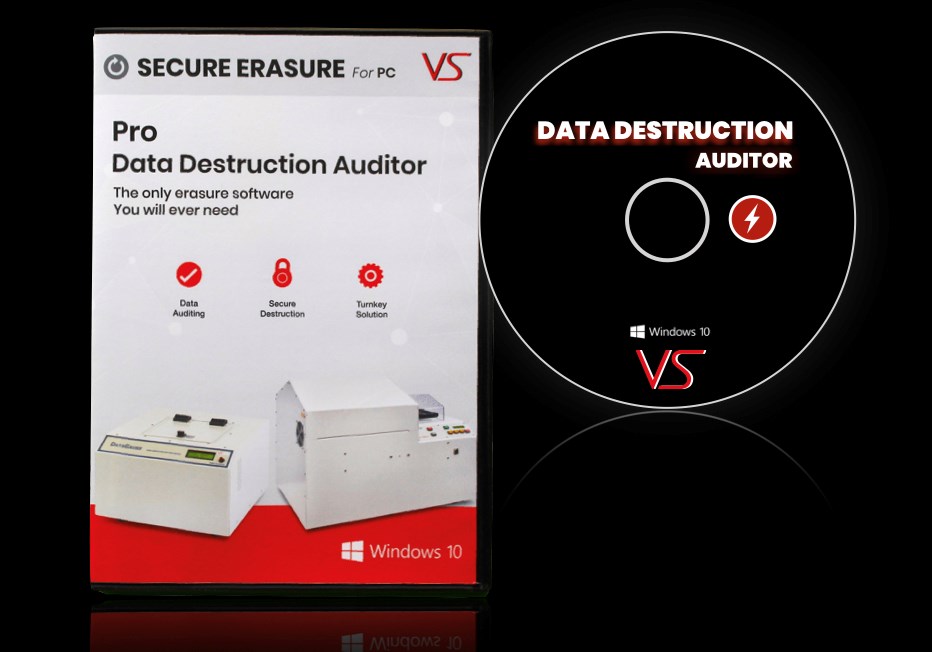Best Practices for Data Destruction to Fortify Your Cyber Security Framework
Best Practices for Data Destruction to Fortify Your Cyber Security Framework
Blog Article
The Important Nature of Information Destruction in Upholding Computer System Security Providers and Protecting Against Unauthorized Gain Access To
In a period where data violations and identity theft are progressively prevalent, the value of efficient information damage can not be overemphasized. Various approaches, from information wiping to physical devastation, offer as important safeguards against unapproved gain access to.
Relevance of Information Damage
In a significantly electronic world, the relevance of data damage can not be overstated. As organizations generate substantial quantities of sensitive information, the prospective repercussions of failing to correctly take care of and get rid of of that information come to be progressively extreme. Data violations, identity theft, and corporate reconnaissance pose considerable dangers, highlighting the need of reliable information damage practices.

Moreover, as innovation advances, so as well do the approaches whereby malicious actors look for to manipulate sensitive details. Organizations has to stay aggressive and watchful in their information damage techniques to guard against these advancing risks. By prioritizing information devastation, companies not just secure their possessions yet likewise foster trust amongst clients and stakeholders, showing a dedication to accountable data management and safety methods.
Methods of Effective Information Devastation
To ensure the full and permanent damage of delicate information, organizations can employ a range of effective approaches customized to their specific demands. One of the most typical approaches is data wiping, which includes making use of specialized software program to overwrite existing information multiple times, making healing essentially difficult. This is particularly valuable for solid-state drives and tough drives, where standard removal approaches are inadequate.
Another efficient technique is degaussing, which makes use of strong magnetic areas to interfere with the magnetic domain names on storage space media, rendering the data irretrievable. This method is particularly matched for magnetic storage space tools, such as disk drive and hard drives.
Physical damage is likewise a viable alternative, including the shredding, crushing, or incineration of storage space tools. This approach guarantees that information can not be recovered, making it ideal for organizations taking care of highly sensitive information.

Conformity With Data Defense Laws
Organizations have to not just focus on efficient data devastation methods yet also make certain compliance with information defense regulations that control how delicate information is taken care of and disposed of. Complying with these guidelines is vital for protecting individual data and keeping client trust. Laws such as the General Information Protection Regulation (GDPR) in the European Union and the Health Insurance Portability and Accountability Act (HIPAA) in the United States impose strict navigate here standards on information administration, that include needs for the safe disposal of delicate information.
To achieve conformity, organizations should execute extensive data devastation policies that straighten with these legal structures. This includes recognizing information that requires damage, developing protocols for safe methodsâEUR" such as shredding physical media or making use of software application that meets market criteria for information wipingâEUR" and preserving thorough documents of devastation tasks. Regular audits ought to be performed to guarantee adherence to these policies and to recognize any prospective locations for enhancement.
Failure to abide with data protection guidelines can result in significant lawful implications, consisting of significant penalties and damages to a company's track record. Integrating conformity right into data devastation methods is not only a lawful commitment however likewise an important component of a durable details safety technique.
Effects of Poor Information Handling
Poor data handling can lead to extreme effects that expand beyond immediate functional setbacks. Organizations might encounter substantial financial losses because of data breaches, which often result in expensive remediation efforts, legal costs, and regulative penalties. These economic effects can strain sources and hinder development, ultimately impacting an organization's bottom line.
Moreover, bad data handling can drastically damage an organization's online reputation. Customers, stakeholders, and partners may shed count on in an entity that stops working to safeguard delicate info, resulting in decreased customer commitment and prospective loss of business opportunities. This disintegration of trust can take years to rebuild, if it can be restored in any way.
Furthermore, organizations can deal with legal implications arising from non-compliance with data protection regulations. Such offenses might lead to examinations and fines, compounding the monetary worry and additional staining the company's picture.
In the world of cybersecurity, inadequate data management techniques can produce susceptabilities that make systems a lot more susceptible to unauthorized gain access to and cyberattacks. Eventually, these consequences underscore the vital relevance of carrying out durable information managing procedures to safeguard delicate details and maintain business stability.
Ideal Practices for Secure Information Disposal


Firstly, information ought to be classified according to its level of sensitivity. Delicate information requires a lot more extensive disposal approaches, such as shredding physical documents and utilizing advanced software for digital data cleaning. Utilizing certified information devastation services ensures conformity with industry regulations and requirements.
Secondly, companies need to implement an information disposal plan that mandates normal audits. This policy must lay out the treatments for data retention and destruction, making sure that obsolete data is disposed of promptly and firmly. Training employees on these procedures is essential to promoting a society of safety and security understanding.
Last but not least, keeping in-depth records of disposed information boosts accountability and offers a clear audit trail. This documentation ought to include the type of data damaged, the method utilized, and the date of disposal.
Conclusion
Adopting durable methods such as information cleaning, degaussing, and physical devastation, along with compliance with policies like GDPR and HIPAA, is vital for safeguarding delicate information. Ignoring proper information disposal techniques can lead to severe effects, consisting of data breaches and lawful effects.
In a period where information violations and identity theft are progressively common, the importance of effective data destruction can not be overemphasized. data destruction. Information violations, identity burglary, and corporate reconnaissance present substantial dangers, highlighting the requirement of efficient data destruction methods
Compliance with policies such as GDPR and HIPAA mandates that organizations apply strict information defense actions, consisting of the protected devastation of data at the end of its lifecycle.
By prioritizing data devastation, firms not just shield their properties however also foster trust amongst clients and stakeholders, demonstrating a commitment to liable information management and safety and security practices.
Organizations should not just concentrate on reliable data destruction approaches yet also make certain compliance with information security policies that control how browse around here sensitive information is taken care of and disposed of.
Report this page